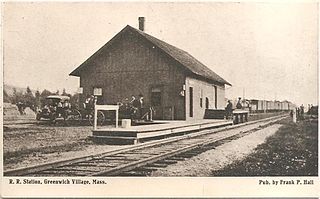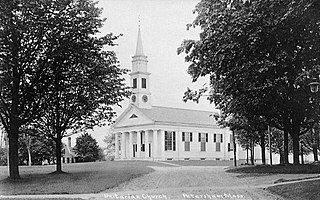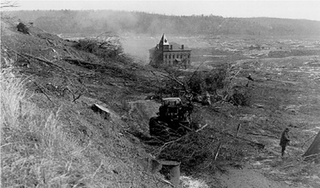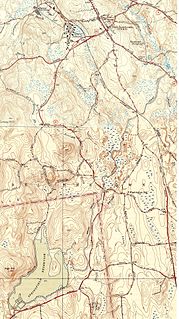Athol Junction is a place in Springfield, Massachusetts, named after the rail line that split off to Athol, Massachusetts, before The Quabbin Reservoir was flooded. It is located next to I-291 and the tracks now are used for the industrial park and extend to Indian Orchard before stopping. When the line was active the tracks extended over the Chicopee River, into Ludlow, Massachusetts, and on to Athol.

Springfield is a city in the state of Massachusetts, United States, and the seat of Hampden County. Springfield sits on the eastern bank of the Connecticut River near its confluence with three rivers: the western Westfield River, the eastern Chicopee River, and the eastern Mill River. As of the 2010 Census, the city's population was 153,060. As of 2017, the estimated population was 154,758, making it the third-largest city in Massachusetts, the fourth-most populous city in New England after Boston, Worcester, and Providence, and the 12th-most populous in the Northeastern United States. Metropolitan Springfield, as one of two metropolitan areas in Massachusetts, had a population of 692,942 as of 2010.

Athol is a town in Worcester County, Massachusetts, United States. The population was 11,584 at the 2010 census.

The Quabbin Reservoir is the largest inland body of water in Massachusetts, and was built between 1930 and 1939. Today, along with the Wachusett Reservoir, it is the primary water supply for Boston, some 65 miles (105 km) to the east as well as 40 other communities in Greater Boston. It also supplies water to three towns west of the reservoir and acts as backup supply for three others. It has an aggregate capacity of 412 billion US gallons (1,560 GL) and an area of 38.6 square miles (99.9 km2).
The Athol and Enfield Railroad and the Springfield and North-Eastern Railroad were chartered in 1869, and succeeded by the Springfield, Athol and Northeastern Railroad in 1872, opening in 1873 as a branch from Athol Junction in Springfield to the Vermont and Massachusetts Railroad in Athol. The B&A bought the line in 1880. The majority of the line was closed in the 1930s due to the formation of the Quabbin Reservoir.

The Springfield, Athol and North–eastern Railroad was a railroad that operated in the northeast United States in the 19th century.

The Boston and Albany Railroad was a railroad connecting Boston, Massachusetts to Albany, New York, later becoming part of the New York Central Railroad system, Conrail, and CSX Transportation. The line is currently used by CSX for freight. Passenger service is still operated on the line by Amtrak, and by the MBTA Commuter Rail system, which owns and uses the section east of Worcester as their Framingham/Worcester Line.














